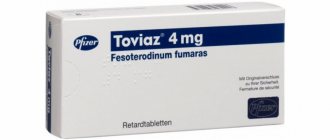Dry mouth is an unpleasant sensation that can be a symptom of serious illnesses. If dry mouth occurs constantly or frequently, it is necessary to understand the cause that is causing it and, if necessary, begin treatment. Elimination of dry mouth, as a rule, is achieved only as a result of treating the underlying disease, which should be the true goal. In any case, the feeling of dry mouth is another reason to pay attention to your health.
Dry mouth is caused by insufficient hydration of the oral mucosa, mostly due to insufficient saliva production. In medicine, dry mouth caused by a cessation or decrease in saliva production is called xerostomia.
.
Quite often, dry mouth occurs in the morning or at night (that is, after sleep).
general characteristics
With insufficient salivation, constant dryness of the mucous membrane, burning and discomfort (burning mouth syndrome), and difficulty speaking are felt.
It becomes difficult for the patient to chew and swallow solid food. Some patients constantly drink water or use special formulations to maintain epithelial moisture. When examining the oral cavity, a small amount of viscous saliva, loss of shine and dryness of the mucous membrane are noted, and surface defects of the epithelium are detected. Saliva has trophic and protective properties for tooth enamel, so with xerostomia, teeth are affected by caries. The absence of lysozyme and nuclease causes a decrease in primary immune defense, which leads to candidiasis, manifested by a white coating on the epithelial membrane. Dryness and cracks in the lips are observed, and angular cheilitis often forms - long-term non-healing “jams” in the corners of the mouth. Elderly patients may complain of constant trauma to the mucous membrane when wearing prostheses.
What happens if the disease is not treated?
Dryness itself as a symptom is not dangerous. But if the disease is not treated, the symptom will progress and can provoke a number of diseases and unpleasant manifestations.
We have already mentioned constant headaches. If the disease is not treated and dryness is not eliminated, the patient does not get enough sleep, becomes irritable, feels depressed and overwhelmed.
If the disease is not treated, a person temporarily loses the ability to distinguish odors.
The overdried mucous membrane, covered with microcracks, is most susceptible to the harmful effects of infectious agents; accordingly, people increasingly suffer from viral diseases.
If you do not try to get rid of the annoying symptom and do not begin to treat this condition in a timely manner, the mucous membrane may begin to thin out, which will lead to its atrophy. And this, in turn, will cause damage to the nasal bones.
A feeling of dryness in the nasal cavity is not as harmless a symptom as it might seem at first. Therefore, the question is: “How to get rid of severe dry nose?” quite relevant.
Classification
Physiological dry mouth, caused by natural causes, and pathological are possible. Taking into account the mechanism of development, neurogenic xerostomia is distinguished, which is caused by a violation of the central regulation of salivation, and medicinal, provoked by long-term use of antihypertensive drugs, atropine. In diagnostic terms, the most valuable is the classification by severity, based on subjective complaints of patients and objective signs. Based on this, there are three degrees of symptom severity:
- I degree - compensated
. Saliva secretion is within normal limits: 1-5 ml for the parotid gland and 0.9-6.8 ml for the submandibular salivary gland. Patients report dryness after a long conversation. Sialography reveals increased accumulation of contrast in the glands. - II degree - partial decompensation
. Symptoms such as dry mouth when talking and the need to drink dry food with water are typical. The mucous membrane is moderately moisturized and retains its physiological shine. - III degree - decompensation
. The secretory function of the salivary glands is significantly reduced or absent. There is pain during eating and talking, burning of the lips and tongue. The mucous membrane is dry, covered with erosions. Caries, stomatitis, glossitis are detected.
Types of condition
Considering the nature of dryness and symptomatic manifestations, the conditions are classified into two types :
- objective – scanty salivary secretion is caused by abnormal dysfunctions of the salivary glands;
- subjective – dryness is formed due to factors that are not associated with changes in the body (bad habits, high consumption of salty and sweet foods, etc.).
Reference! The symptoms are easy to recognize - there is a great desire to drink. Moreover, after drinking water, the feeling of thirst remains.
Causes of dry mouth
Both certain physiological factors and various pathological conditions lead to subjectively felt drying of the epithelium. Natural causes of dry mouth are the consumption of pickles, herring, and other foods containing a lot of salt. Drying of the mucous membranes occurs when there is insufficient humidity in the room. Dryness of the mouth of varying intensity, associated with sympathetic release, is possible during conflicts, quarrels, fear, and chronic stress.
Sialadenitis
The most common cause of severe xerostomia is inflammation of the salivary glands. The pathological process is initially one-sided, but after a few days the inflammation spreads to the opposite side. Patients complain of swelling in the area of the salivary glands, increased body temperature, and painful opening of the mouth. Eating is difficult due to pain and dryness of the epithelium, which is caused by the cessation of secretion from the affected gland. Chronic sialadenitis is characterized by moderate pain and normal size of the salivary gland.
Other diseases of the salivary glands
Complaints of dry mouth are made by patients with mumps, a viral infection that primarily affects the parotid salivary glands in children, and less commonly, the submandibular and sublingual glands. The symptom is combined with general intoxication, pain and swelling of the glands on both sides, deforming the contours of the patient’s face. Severe xerostomia with high temperature, swelling, hyperemia in the area of inflammation are symptoms of a salivary gland abscess, complicating the course of sialadenitis and sialolithiasis.
Sjögren's disease
Dryness of the oral mucosa against the background of insufficient secretion of tear fluid, burning in the eyes, drying and peeling of the skin is typical for autoimmune damage to the glands in Sjögren's disease. The normal secretion of saliva is prevented by the infiltration of the ducts by lymphocytes and plasma cells, an autoimmune reaction with the formation of antibodies to the glandular epithelium. The parotid glands usually increase symmetrically in size; upon examination of the mouth, bright pink redness of the mucous membrane, contact bleeding, folded tongue, and multiple caries are revealed.
Diseases of the oral cavity and nasopharynx
The close location of all anatomical structures, general innervation and blood supply cause disruption of the salivary glands when various organs of the oropharynx and nasopharynx are affected. Dryness of the epithelium is observed during inflammatory processes, some rare pathological conditions - glossalgia, parotid fistula, galvanosis. Common causes of xerostomia are:
- Stomatitis
. With an inflammatory process in the oral cavity, dryness is combined with pain when eating, bad breath, and bleeding. The catarrhal form is characterized by redness and swelling; in the aphthous form, blisters and erosions form. With allergic stomatitis, hyperemia, ulcers, and erosions are determined. In older people, prosthetic stomatitis is possible. - Candidiasis
. When epithelial cells are damaged by fungi of the genus Candida, a white coating appears on the tongue and mucous membranes of the cheeks, a burning sensation and severe dry mouth are disturbing. Cracked lips are typical. The disease should be distinguished from hairy leukoplakia, which has a similar clinical picture, but affects patients with immunodeficiencies when exposed to a virus. - Hypertrophic rhinitis
. When the epithelial layer of the nasopharynx is thickened and the airways are partially blocked, patients breathe predominantly through the mouth, especially at night. This leads to severe dryness, which reaches its maximum intensity in the morning. A similar mechanism for the development of xerostomia is observed in nasopharyngeal cancer.
Infectious diseases
The appearance of dry mouth is characteristic of intestinal infections, especially those accompanied by watery diarrhea and leading to severe dehydration. Xerostomia is pathognomonic for cholera, a gastrointestinal form of salmonellosis. It is possible to identify a symptom during the febrile period of other infectious pathologies - brucellosis, psittacosis, Crimean fever. The oral mucosa dries out during the polyuric stage of hemorrhagic fever with renal syndrome, which is caused by dehydration due to the release of up to 5 liters of urine per day.
Diabetes mellitus (DM)
Xerostomia with thirst and polyuria is a specific symptom. In patients with type 1 diabetes, microangiopathies and elevated blood glucose levels are predisposing factors to dry mouth. In elderly patients with insulin-dependent diabetes, the symptom is considered a manifestation of diabetic polyneuropathy. In addition to dry mouth, the patient is concerned about constant weakness, itchy skin, rashes, pustules, and fungal skin infections. Similar symptoms occur with steroid diabetes.
Neurological dysfunction
The prerequisites for dryness of central origin are considered to be incoordination of the nervous system, disruption of connections between higher cortical structures and the vegetative nuclei of the medulla oblongata. The symptom is observed in patients with neuroses, panic attacks, and organic anxiety disorder. Drying of the oral mucosa is characteristic of peripheral autonomic failure and polyneuropathy of pregnancy. Xerostomia develops in Lambert-Eaton syndrome, an autoimmune disease that affects the presynaptic membranes of neurons.
Gastroenterological diseases
Dry mouth is a common sign of damage to the pancreas. In case of fibrosis of the organ, it is caused by secondary diabetes; in case of pancreatitis and a split pancreas, it is caused by digestive disorders. The symptom is detected in chronic gastritis and is combined with epigastric pain, stool instability, nausea and vomiting. Dryness, which is accompanied by pain in the right hypochondrium, a feeling of bitterness in the mouth, nausea, often becomes a sign of hepatitis.
Urological pathology
In diseases of the urinary system, dry mouth is usually caused by two mechanisms: dehydration due to polyuria and the accumulation of toxic protein compounds in the bloodstream. With renal colic caused by obstruction of the ureter or pyelocaliceal system, the situation is aggravated by pain with a pronounced sympathoadrenal reaction. In this condition, in addition to dry mouth, unbearable pain in the lower back, nausea and vomiting, and painful tenesmus are disturbing.
Often, xerostomia is provoked by nephrosclerosis, polycystic disease, and other severe kidney diseases with increasing chronic renal failure. The combination of dryness with swelling and lower back pain is characteristic of nephritic syndrome of various etiologies. Drug-induced nephropathy is often accompanied by drug-induced xerostomia. The feeling of dry mouth is typical of paraneoplastic nephropathy, which occurs with severe metabolic and immunological disorders.
Intoxication
Xerostomia in case of exogenous poisoning and endotoxemia is provoked by disruption of all body systems, discoordination of the nervous and humoral regulation of salivary secretion processes. In case of foundry fever and other poisonings involving inhalation of aggressive substances, the situation is aggravated by the direct damaging effect of vapors on the oral mucosa. The prerequisites for dry mucous layer are:
- Bad habits.
Xerostomia is observed during hangover syndrome, which is caused by severe intoxication of the body. The symptom is also typical of nicotine addiction, in which it is caused by constant irritation of the epithelium with cigarette tar. Dry mouth in combination with convulsions and hyperthermia can be a sign of poisoning with alcohol surrogates. - Cathinone abuse
. Abuse of norepinephrine provokes an increase in the activity of the sympathetic division of the autonomic nervous system, which is manifested by dilated pupils, dry mucous membranes, and psychomotor agitation. Over time, the euphoric effects of taking the drug decrease, and encephalopathy increases.
In cancer cachexia, xerostomia occurs as a result of gross disturbances in the functioning of the body caused by endogenous intoxication by tumor metabolic products and decaying cancer cells. The condition is accompanied by dyspeptic disorders, exhaustion, severe anemia, changes in emotional and mental status, and insomnia. Dry mouth worries patients with massive intoxication of the body by tissue decay products during gangrene.
Metabolic and endocrine disorders
The secretion of saliva has not only nervous but also humoral regulation. Various deviations from normal levels of hormones and biologically active substances cause disturbances in the functioning of all organs, including the salivary glands. The appearance of dry mouth mucosa is associated with secondary fluid losses that develop due to disturbances in water-salt metabolism and homeostasis. Xerostomia is potentiated by endocrine disorders such as:
- Algodismenorrhea
. Painful menstruation can occur at different ages, but most often dysmenorrhea is diagnosed in adolescents during the period of formation of sexual function. Complaints of dry mouth are due to the increased influence of prostaglandins on the level of salivation. With algodismenorrhea, pain is accompanied by dyspeptic disorders and asthenia. - Hypercalcemic crisis
. Xerostomia in this disorder is associated with dehydration accompanied by polyuria, repeated vomiting and diarrhea. An increase in calcium levels is manifested by abdominal cramps, muscle weakness, and severe thirst. Similar symptoms occur in Burnett syndrome, a dysmetabolic pathology with hypercalcemia and metabolic alkalosis. - Hypovitaminosis
. The combination of angular cheilitis and dry lips and oral cavity is typical for pyridoxine (vitamin B6) deficiency. For hypovitaminosis, a change in the appearance of the tongue is specific - it becomes bright red with a shiny “varnish” surface due to atrophic processes in the epithelial layer. - Pheochromocytoma
. With a tumor of the adrenal medulla, dry mouth is caused by increased endocrine function with a significant increase in the level of adrenaline and norepinephrine in the blood. These substances enhance the activity of the sympathetic nervous system, which inhibits the secretion of the salivary, gastric and intestinal glands.
Acute and emergency conditions
Xerostomia in critical conditions is caused by several mechanisms: severe dehydration, disturbances of neurohumoral regulation, reflex reactions due to excessive irritation of pain receptors. These pathologies are typically characterized by a severe and extremely serious condition of the patient, dysregulation of basic vital functions. The patient requires emergency medical care. Dry mouth is caused by:
- Bleeding
. Dryness of the oral mucosa during blood loss is promoted by significant dehydration of the body. The leading signs are pale skin, tachycardia, and a drop in blood pressure. The symptom develops both with internal bleeding and as a result of external blood loss. Ruptures of aneurysms of the renal and other arteries, leading to collapse, are life-threatening. - Acute abdomen syndrome
. Xerostomia is considered one of the manifestations of catarrhal appendicitis and other surgical conditions - obstetric peritonitis, biliary peritonitis, mesadenitis. The sign is pathognomonic for the initial phase of paralytic intestinal obstruction. Dry mouth is combined with severe abdominal pain and symptoms of peritoneal irritation. - Cardiovascular pathology
. The appearance of xerostomia is associated with autonomic reactions to severe pain in the heart or severe hemodynamic disturbances. Dry mouth is observed during hypertensive crisis and angina pectoris. The symptom is accompanied by headaches, blurred vision, and disturbances of consciousness. - Traumatic shock
. Symptoms of massive soft tissue injuries and bone fractures are explained by gross changes in autonomic reactions and a collapsing state due to severe pain. Pronounced pallor of the skin and mucous membranes, xerostomia, cold sweat. Impaired consciousness and lethargy are possible. - Fainting
. The post-syncope period of syncope is characterized by dry mouth and hyperhidrosis caused by dysfunction of the autonomic nervous system. A similar mechanism for the occurrence of symptoms is observed after sunstroke. In this case, in addition to dry mouth, intense headaches, flashing “spots” before the eyes, and increased breathing are observed.
Survey
Patients complaining of dry mouth usually consult a dentist, and then may be referred to other specialists to clarify the diagnosis. A diagnostic search involves the appointment of laboratory and instrumental methods aimed at clarifying the condition and function of the salivary glands and identifying the original cause of the symptom. The most informative are:
- Sialometry
. Measurement of the amount and rate of saliva secretion from the parotid gland in response to stimulation is done to determine the severity of xerostomia. The method can be used to monitor the quality of patient treatment. - Sialography
. X-ray examination of the excretory ducts and body of the gland is used to identify structural disorders and mechanical obstacles to the secretion of saliva. Contrast radiography can detect cysts, abscesses, and tumors. - Ultrasonography
. Ultrasound of the salivary glands is performed for quick non-invasive diagnosis of their condition. Sonography helps to detect nonspecific signs of inflammatory processes and space-occupying formations, and morphological changes. - Obtaining a biopsy sample
. A biopsy of the salivary glands is prescribed when the etiology of dry mucosa is unclear, when it is necessary to exclude autoimmune diseases or amyloidosis. Most often, material is collected from the minor salivary glands of the lower lip. - Other instrumental methods
. The plan for further examination is determined based on the patient’s complaints and objective status. According to indications, rhinoscopy and pharyngoscopy are recommended; ultrasound and radiography are used to assess the condition of the abdominal organs.
Ultrasound examination of the salivary glands
Symptoms
During the day, with normal functioning of the salivary glands, about 2 liters of saliva are secreted. It contains: water, salts, minerals, lysozyme, mucin and enzymes that promote the digestion of urea, carbohydrates and uric acid.
With scanty discharge, the following symptoms are observed :
- saliva becomes sticky;
- cracks appear on the lips;
- severe thirst;
- the tongue becomes dry, and the throat also feels dry;
- there is hoarseness and hoarseness in the voice;
- the mouth smells bad;
- plaque is found on the surface of the tongue.
Symptomatic therapy
Dry mouth of physiological origin goes away on its own with correction of the diet and cessation of stress. In other cases, to alleviate the condition and improve the quality of life, solutions to moisturize the mucous membrane and cholinergic drugs are used. It is advisable to use a humidifier, especially during the heating season. To prevent secondary lesions of the oral cavity, it is necessary to maintain hygiene, use irrigators and dental floss. To determine the cause of xerostomia and prescribe treatment, it is important to consult a specialist.









